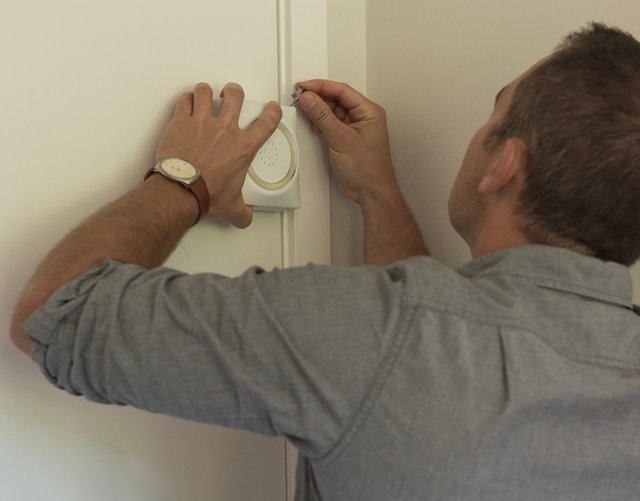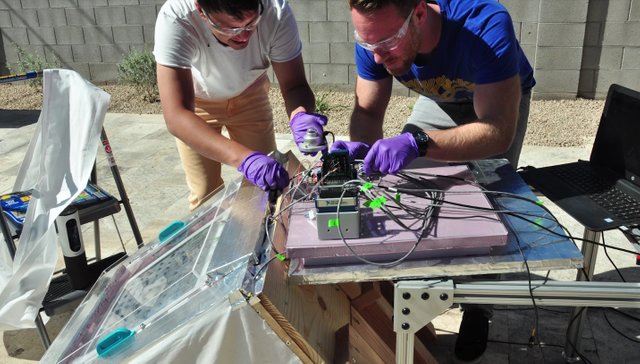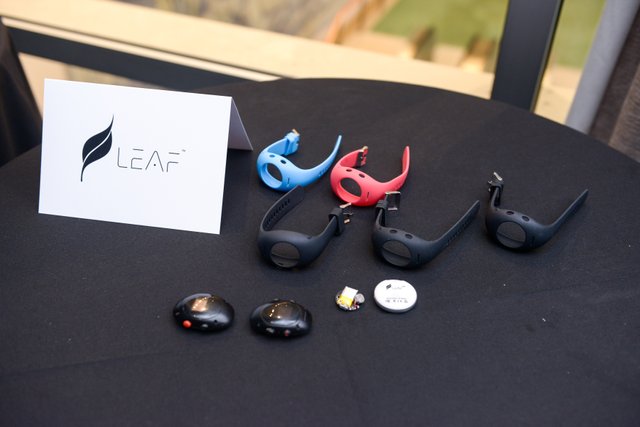Build your own L3-37 droid complete with voice interaction
Robot maker Patrick Stefanski has created a 3D-printed – and animated – model of L3-37, the droid in the recent Solo movie. L3-37 is one of the funnest – and woke – droids in recent memory and this recreation is fun and ingenious.
Stefanski used Alexa voice controls to let the robot head respond to voice commands and he set the wake word to “Hey L3” to which the robot responds with a grumpy “What!”
The version you see above is painted and weathered but you can 3D print your own pristine version from here and then add in a Raspberry Pi and Arduino with a simple servo to control the head motion. In all it looks like a lot of fun and the hardest part will be printing all of the larger head parts necessary to recreate L3’s saucer-like dome.
It could make for a nice weekend project and looks to be surprisingly simple to build. Just don’t be surprised L3 rallies your DVR and air conditioner to revolt against attacks on droid rights.
LifeDoor crowdfunds the production version of its fire-thwarting door-closer
At CES in January I was pleasantly surprised by the LifeDoor, a smart home gadget that’s actually worth having. These little boxes automatically close doors when smoke detectors go off, inhibiting the spread of fire and smoke. The company is heading to KickStarter to fund the production version of the device, which has several improvements over the prototype I saw.
The simplicity and practicality of the device made it a standout at a show flooded with useless junk; the small team essentially made a gadget that automatically does what firefighters all insist you do: close the door in case of fire. That can be hard to remember to do or enforce, but the LifeDoor makes it so you don’t have to do either.
 Installation, on any standard door hinge, shouldn’t take longer than a minute or two. It doesn’t detect smoke or heat, but rather lets your smoke detectors and other gadgets do that — instead, it listens for the beep when smoke is detected, and quickly (but gently) shuts the door against the threat. It’ll then light up and sound its own alarm in case you didn’t hear the first or the door muted the noise.
Installation, on any standard door hinge, shouldn’t take longer than a minute or two. It doesn’t detect smoke or heat, but rather lets your smoke detectors and other gadgets do that — instead, it listens for the beep when smoke is detected, and quickly (but gently) shuts the door against the threat. It’ll then light up and sound its own alarm in case you didn’t hear the first or the door muted the noise.
The version I saw was fully working, but was 3D-printed and the team was still making improvements. The production device is only about two-thirds the size of the prototype, which wasn’t too big to begin with. The new enclosure should help with detecting alarm signals as well. The microphone subsystem also will now sit idle unless it hears something, saving power and allowing the LifeDoor to go for up to two years on one battery.
Right now they’re looking to raise $50,000 on Kickstarter — they’re going for a little less than $100 each as perks. My guess is all the backers so far are firefighters. I can say honestly that if I had an actual house I would buy a couple of these things in a second. I’ll leave myself open to accusations of shilling here because unlike most smart home knick-knacks, this one is more than useful — it could save lives.
LIV is Kickstarting a beefy and bold chronograph for race lovers
LIV Watches is a crowdfunding darling with a number of Kickstarted watches under its belt. Now it’s offering a unique set of watches to backers, including the Liv Genesis GX-AC, an automatic chronograph with date. The watch runs a Sellita Caliber SW500, visible through the see-through back, and features a screw down crown and massive metal pushers.
The company prides itself on the size of its watches and this piece is no exception. The GX-AC isn’t wildly big – at 46mm it’s just a bit bigger than most Android Wear watches – and it fits nicely thanks to a rounded rubber band that hugs the top and bottom of the case. There is a small running seconds hand at nine-o’clock and registers for minutes and hours at noon and six.
[gallery ids="1654222,1654220,1654219,1654218,1654217"]If you’ve seen automatic chronographs before you know what you’re in for – a standard movement encased in a special steel case that is designed to appeal to a certain demographic. LIV is also Kickstarting a number of other watches, including a Day-Date chronograph that is flight-inspired and a diver, so check them out. However, if you’re into this piece then you’re in for a treat. It starts at $790, far below most mechanical chronographs I’ve seen, and the workmanship and quality of this piece is quite nice.
I wore it a little over the past few weeks and found it very comfortable and easy to read. The running seconds hand is a bit small and the lume is limited to the pips and hands but as a fashion/everyday wear piece it’s excellent. If you particularly like the style – F1 racing meets Kylo Ren – then you’re probably going to like this thing and since they’ve already surpassed their goal and hit $602,000 you can expect delivery of your perk.
Again, watches like this one require a specific style and taste. The LIV is reminiscent of Alpina and Tissot in its case style and decoration and it pays homage to racing and speed. Grabbing a Swiss made watch for under $1,000 is a treat and this is a good example of the species and well worth a look.
This box sucks pure water out of dry desert air
For many of us, clean, drinkable water comes right out of the tap. But for billions it’s not that simple, and all over the world researchers are looking into ways to fix that. Today brings work from Berkeley, where a team is working on a water-harvesting apparatus that requires no power and can produce water even in the dry air of the desert. Hey, if a cactus can do it, why can’t we?
While there are numerous methods for collecting water from the air, many require power or parts that need to be replaced; what professor Omar Yaghi has developed needs neither.
The secret isn’t some clever solar concentrator or low-friction fan — it’s all about the materials. Yaghi is a chemist, and has created what’s called a metal-organic framework, or MOF, that’s eager both to absorb and release water.
It’s essentially a powder made of tiny crystals in which water molecules get caught as the temperature decreases. Then, when the temperature increases again, the water is released into the air again.
 Yaghi demonstrated the process on a small scale last year, but now he and his team have published the results of a larger field test producing real-world amounts of water.
Yaghi demonstrated the process on a small scale last year, but now he and his team have published the results of a larger field test producing real-world amounts of water.
They put together a box about two feet per side with a layer of MOF on top that sits exposed to the air. Every night the temperature drops and the humidity rises, and water is trapped inside the MOF; in the morning, the sun’s heat drives the water from the powder, and it condenses on the box’s sides, kept cool by a sort of hat. The result of a night’s work: 3 ounces of water per pound of MOF used.
That’s not much more than a few sips, but improvements are already on the way. Currently the MOF uses zicronium, but an aluminum-based MOF, already being tested in the lab, will cost 99 percent less and produce twice as much water.
With the new powder and a handful of boxes, a person’s drinking needs are met without using any power or consumable material. Add a mechanism that harvests and stores the water and you’ve got yourself an off-grid potable water solution.
“There is nothing like this,” Yaghi explained in a Berkeley news release. “It operates at ambient temperature with ambient sunlight, and with no additional energy input you can collect water in the desert. The aluminum MOF is making this practical for water production, because it is cheap.”
He says there are already commercial products in development. More tests, with mechanical improvements and including the new MOF, are planned for the hottest months of the summer.
Women’s Safety XPRIZE $1M winner is a smart, simple panic button
Devices like smartphones ought to help people feel safer, but if you’re in real danger the last thing you want to do is pull out your phone, go to your recent contacts and type out a message asking a friend for help. The Women’s Safety XPRIZE just awarded its $1 million prize to one of dozens of companies attempting to make a safety wearable that’s simple and affordable.
The official challenge was to create a device costing less than $40 that can “autonomously and inconspicuously trigger an emergency alert while transmitting information to a network of community responders, all within 90 seconds.”
Anu and Naveen Jain, the entrepreneurs who funded the competition, emphasized the international and very present danger of sexual assault in particular.
“Women’s safety is not just a third world problem; we face it every day in our own country and on our college campuses,” said Naveen Jain in the press release announcing the winner. “It’s not a red state problem or a blue state problem but a national problem.”
“Safety is a fundamental human right and shouldn’t be considered a luxury for women. It is the foundation in achieving gender equality,” added Anu Jain.
Out of dozens of teams that entered, five finalists were chosen in April: Artemis, Leaf Wearables, Nimb & SafeTrek, Saffron and Soterra. All had some variation on a device that either detected or was manually activated during an attack or stressful situation, alerting friends to one’s location.
 The winner was Leaf, which had the advantage of having already shipped a product along these lines, the Safer pendant. Like any other Bluetooth accessory, it keeps in touch with your smartphone wirelessly and when you press the button twice your emergency contacts are alerted to your location and need for help. It also records audio, possibly providing evidence later or a deterrent to harassers who might fear being identified.
The winner was Leaf, which had the advantage of having already shipped a product along these lines, the Safer pendant. Like any other Bluetooth accessory, it keeps in touch with your smartphone wirelessly and when you press the button twice your emergency contacts are alerted to your location and need for help. It also records audio, possibly providing evidence later or a deterrent to harassers who might fear being identified.
It’s not that it’s an original idea — we’ve had various versions of this for some time, and even covered one of the other finalists last year. But they haven’t been quantitatively evaluated or given a platform like this.
“These devices were tested in many conditions by the judges to ensure that they will work in real-life cases where women face dangers today. They were tested in no-connectivity areas, on public transit, in basements of buildings, among other environments,” explained Anu Jain to TechCrunch. “Having the capability to record audio after sending the alert was one of the main differentiators for Leaf Wearables. Their chip design and software was also easy to be integrated into other accessories.”
Hopefully the million dollars and the visibility from winning the prize will help Leaf get its product out to people who need it. The runners-up don’t seem likely to give up on the problem, either. And it seems like the devices will only get better and cheaper — not that this will change the world on its own.
“Prices will come down as the sensor prices drop. In many countries it will require community support to be built,” continued Jain. “These technologies can act as a deterrent but in the long term culture of violence again women must change.”
Anker’s Spirit earbuds are wireless and waterproof
Anker, a battery maker turned accessory house, recently released the $39 Spirit X earbuds under their Soundcore brand. Aimed at runners and other heavy sweaters, the earbuds are completely waterproof under the IPX7 rating, a classification that means it can stand up to 1 meter of submersion.
What this means is that you get a surprisingly cheap and rugged set of workout earbuds that you’re not afraid to get a little dirty.
I tested a pair and found them quite nice for running. The rubber ear hooks kept them in place and the sound quality was not horrible, especially compared to my previous pair of Philips corded headphones. The sound quality, while a bit muffled, is what you’d expect from a standard pair of sports headphones, and the rubber earbuds stayed in place quite nicely. The company claims the headphones have a 12-hour battery life, which is about right — I used them for a few days and saw little change in the battery level.
A small flap on the bottom of the control bar hides a micro USB port for charging and there are three buttons — volume up, track advance and volume down. There are no voice prompts, but there is a built-in microphone for calls.
These are not swimming headphones. The IPX7 rating means they’ll stand up to sweat and rain but not a few dozen laps in the pool. An aqua-phobic nano-coating keeps the drops out of the inside of the headphones and should let you keep trucking long after other headphones have rusted out.
Long thought of as a bargain Amazon brand, Anker is expanding its reach and understanding of the market. By building inexpensive gear for those who don’t mind a slight trade-off in audio quality, they’ve hit an interesting spot in the headphone market. While this won’t beat your high-end over-ear headphones with all the trimmings, sometimes a $40 pair of daily wear earbuds is all you need.

Source: https://techcrunch.com/
This user is on the @buildawhale blacklist for one or more of the following reasons:
Downvoting a post can decrease pending rewards and make it less visible. Common reasons:
Submit
You got a 10.07% upvote from @redlambo courtesy of @tokenguy! Make sure to use tag #redlambo to be considered for the curation post!
Downvoting a post can decrease pending rewards and make it less visible. Common reasons:
Submit